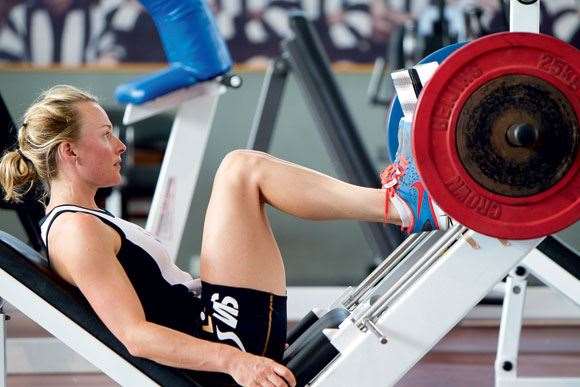Hands up those who ran to beat the closing lift doors on their way up to their fifth-floor office suite this morning?
 The new face of stair climbing? Images: Joseph Feil
The new face of stair climbing? Images: Joseph FeilWELL-PREPARED
“Even though I don’t have a running background, stair climbing places high demands on your quads and glutes. So, if you’ve done cycling and rowing, which are predominately leg-based, you’ve probably set up your legs pretty well to tolerate that lactic. With almost seven years of full-time rowing under my belt, I thought, ‘ C’mon, you’ve got to back yourself half-way up that you’ve done all this before.’
“Rowing in the lightweight class, we have to average 57kg in the doubles. So we have weight management requirements. Rowing-specific training is only one aspect of my regime. On top of that, I do a little bit of running or extra commuting on my bike for my weight management. You end up being quite efficient in the power-to-weight stakes.”
ROWING VS STAIR CLIMBING
“In rowing, we have a lot of measurable training. We do a lot on the ergometer [indoor rower] and a lot on the Wattbike. Quite often you have splits and times
and distances and stroke rates you know you should be able to maintain.
“Stair-climbing, on the other hand, is an activity you can apply yourself to maximally, but you have no idea of your capabilities or limits or maximums. We spend a lot of time in rowing on the technical aspects as well. With stair climbing, it’s just ‘go for it and race’.”
ROW, ROW …
“We train between 20-30 hours per week for most of the year; it’s a fairly full-time training load. We do six or seven on-the-water sessions, two long bike rides, three gym and two ergometer sessions each week. Then there’s the Wattbike, which is mixed in as another training session.”
WATT?
“The Wattbike simulates riding a bike on the road; each pedal stroke you take has a bit of run to it. The Wattbike has a computer screen which displays a graph with four quadrants. It records your forward and back pedal strokes; you can see your left and right-foot force application, so you can sit evenly on the bike, pushing equally with both legs. You can see your power output in watts or kilometres per hour. Your cadence and resistance are settable, allowing you to predict the outcome of your watts generated by the end of your session.”
Related Articles

Magnificent seven? Scheffler plays down career slam

Allan goes wire-to-wire for second Champions Tour win













